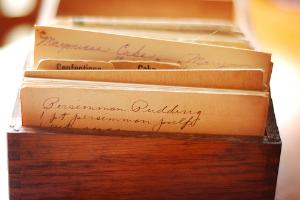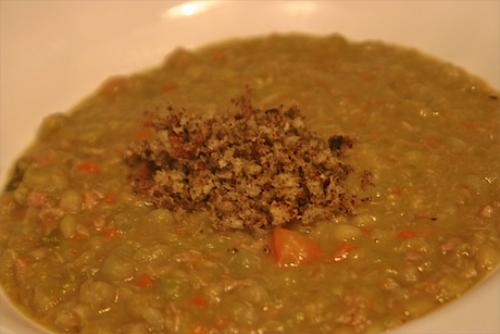Lentil Soup Recipe
 While lentils may be more closely associated with Indian than Italian cuisine, they’ve been fully adopted by many Italian cooks and are a quite common ingredient in central Italian cuisine. Judith Klinger sent me this recipe for lentil soup which she says is typical of Umbria and other parts of central Italy. It’s a great wintertime dish that’ll warm up both your kitchen and your stomach. I’m pleased to introduce what I hope will be a long series of guest-posted Italian recipes on WhyGo Italy with this easy Italian soup!
While lentils may be more closely associated with Indian than Italian cuisine, they’ve been fully adopted by many Italian cooks and are a quite common ingredient in central Italian cuisine. Judith Klinger sent me this recipe for lentil soup which she says is typical of Umbria and other parts of central Italy. It’s a great wintertime dish that’ll warm up both your kitchen and your stomach. I’m pleased to introduce what I hope will be a long series of guest-posted Italian recipes on WhyGo Italy with this easy Italian soup!
But before we get to the soup, I have to tell you the story of how Judith & I “met.” She was referred to WhyGo Italy via another expat in Italy, and responded to my call for Italian recipes without knowing that one of my friends in my local Italian conversation group is someone who also lives part-time in the same tiny Umbrian town Judith lives in! When I put two and two together and asked Judith if she knew that I was a friend of Jody’s, she and I both just about fell out of our chairs. Ahh, the wonders of the internet!
So, thanks to Judith for this recipe, and thanks to the internet for reminding me what a very small world this really is.
Minestra di Lenticchie
Lentil Soup
Ingredients
- 2-3 stalks of celery
- 2 carrots
- 1 onion
- 2-3 cloves of garlic
- 4-5 links of sausage (optional)
- 1 glug of red wine (that’s a technical term for when you add a glug of wine)
- 1 cup lentils
- 4 cups water
- salt, pepper, thyme, olive oil
Directions
- Finely chop the celery, carrots, onion and garlic. The pieces should be no bigger than the lentils. (In Italian, this mixture is called “soffrito,” and it’s the base for a zillion soups and sauces.)
- Gently sauté in your soup pot until the soffrito is soft and wilty.
- Roughly chop the sausages into bite size pieces and add to the soup pot. Let the sausage mingle with the soffrito and then add a glug of red wine.
- Add a bit of salt, a few grinds of pepper and a bit of fresh thyme.
- Add the four cups of water and let the pot come to a gentle boil.
- Now add the lentils. When the pot comes back to a boil, lower the heat to its lowest setting, cover tightly and leave the pot alone for the next two hours. I like to make this soup in a ceramic casserole pot with a lid. I set the oven at 300F and leave the soup in the oven. I find that I can better control a lower heat in the oven, plus you get the benefit of total surround heat instead of just heat from the bottom of the pot. You want lazy bubbles coming up to the surface, not a rolling bowl.
- After two hours take about a cup of the soup (being careful to not get sausage bits in the cup) and puree it.
- Return the pureed soup to the pot and mix it in with the remaining soup. What you’ve done is make the soup ‘creamy’ without adding any cream at all. It’s a good trick to remember when you are looking to thicken a soup without actually adding cream.
- If you like your lentil soup with a little tartness or acidity, add a small dollop of sweet vinegar or serve with a lemon wedge.
Add some crusty bread, a green salad, a glass of wine, a visit with old friends to a big bowl of this Italian lentil soup and you have all the makings of quite a memorable lunch!

original photos: recipe box by brighterworlds on Flickr, lentil soup by Judith Klinger

Judith Klinger splits her life between the hustle and energy of New York City and the ringing bells and slow pace of the medieval village of Montone, Italy. After running a successful apparel design company, she turned fulltime to her passion for food. She is currently the chef and co-owner of the recently reopened Erba Luna Ristorante in Montone, Italy, and the chef and creator of Aroma Cucina, which provides various private dining, and learning experiences in Umbria, Italy. She has earned degrees from the New York Restaurant School, and Ital.Cook, a Slow Food institution located in Jesi, Italy where she attended master classes dedicated to the intricacies of regional Italian cooking. Throughout this development she created her web site AromaCucina.com and has developed an international following with her daily blog.
Never one to sit still, and a committed hedonist, Judith’s other interests include: culinary history and anthropology, bread baking, sharing meals with family and friends, skiing, biking, playing outdoors, traveling, being in the mountains, swimming in the sea, wine and libations, and photography.